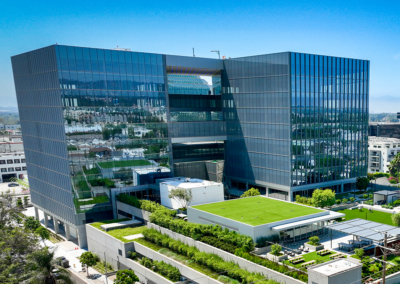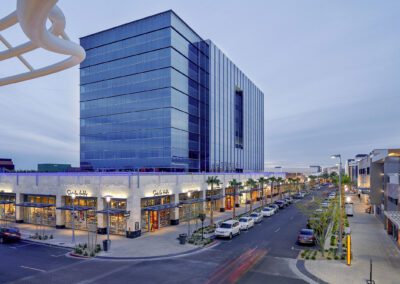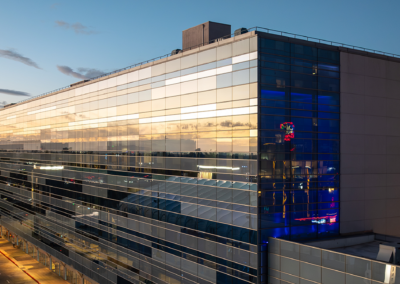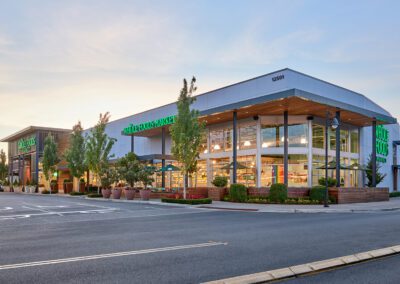Details
- Size: 50,000 square feet
- Completion Date: 2020
- Sustainability: Net Zero Energy & Living Building Challenge Certified
Team
- Architect: Frederick Fisher and Partners
- Contractor: Hathaway Dinwiddie
Awards
- Grand Award Winner, 2021 American Council of Engineering Companies (ACEC) Engineering Excellence Awards (EEA)
- Presidential Honoree Building Team Award, 2020 AIA|LA
- Design Awards Winner, 2020 SCDF
- NEXT Honor Award, 2019 AIA | LA COTE
Santa Monica City Hall East is a 50,000 square foot, state-of-the-art civic building addition adjacent to Santa Monica’s existing 1939 historic City Hall. The addition is designed to meet the City’s historic guidelines and standards, but is seismically separated from the existing structure. JAMA provided analysis of the existing historic structure and evaluated the feasibility of structural options for the new facility, determining the new addition should be seismically separated to avoid requiring seismic upgrade to the existing building.
The structural system of the new addition utilizes 11-inch thick two-way post-tensioned concrete slabs spanning within a column grid of 36 feet by 31 feet. Simple flat plate construction was selected to minimize structural soffits and expose ceilings for thermal mass. The lateral force resisting system is comprised of special reinforced concrete shear walls.
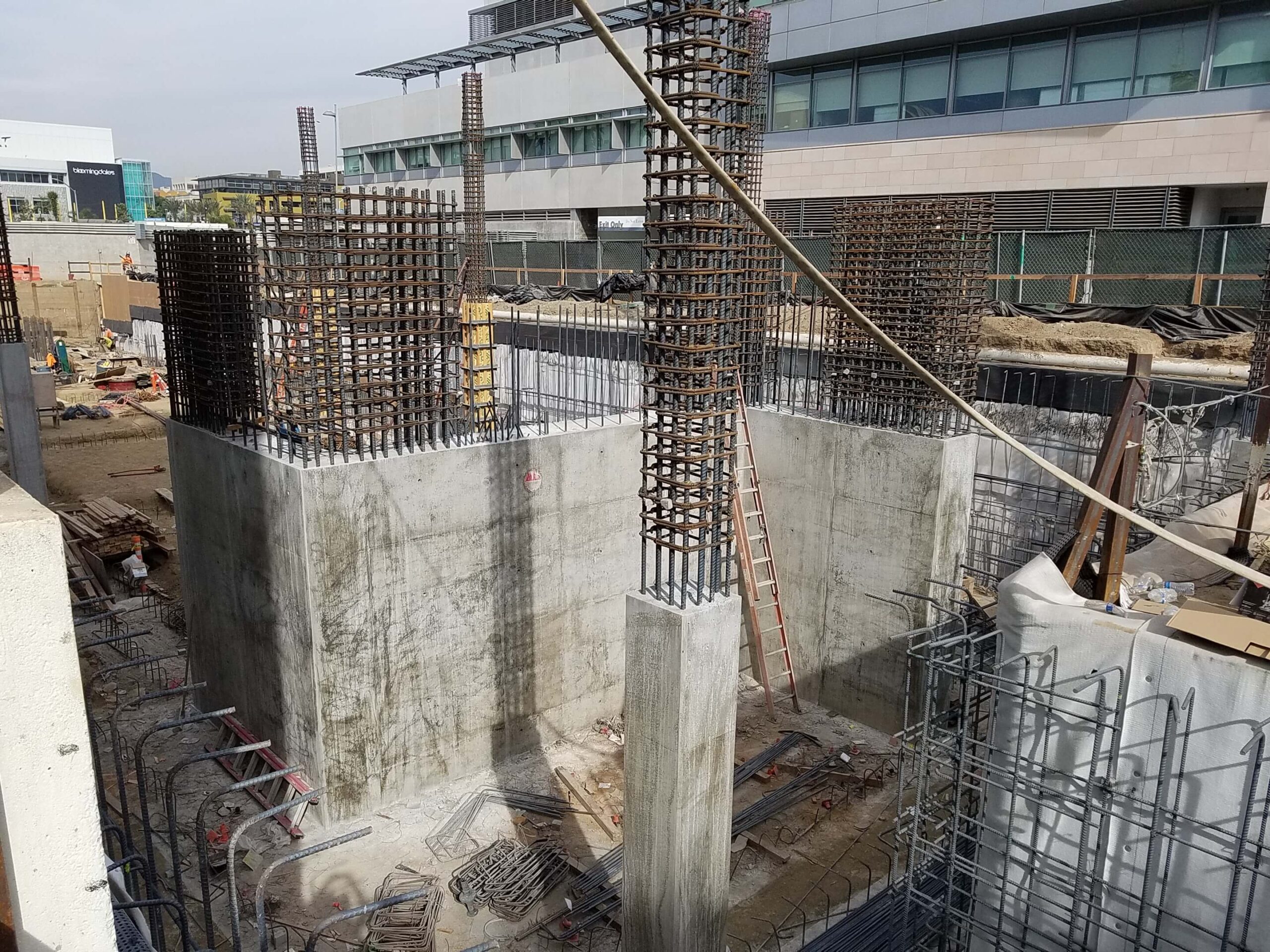
Z-Shaped Basement Concrete Shear Wall
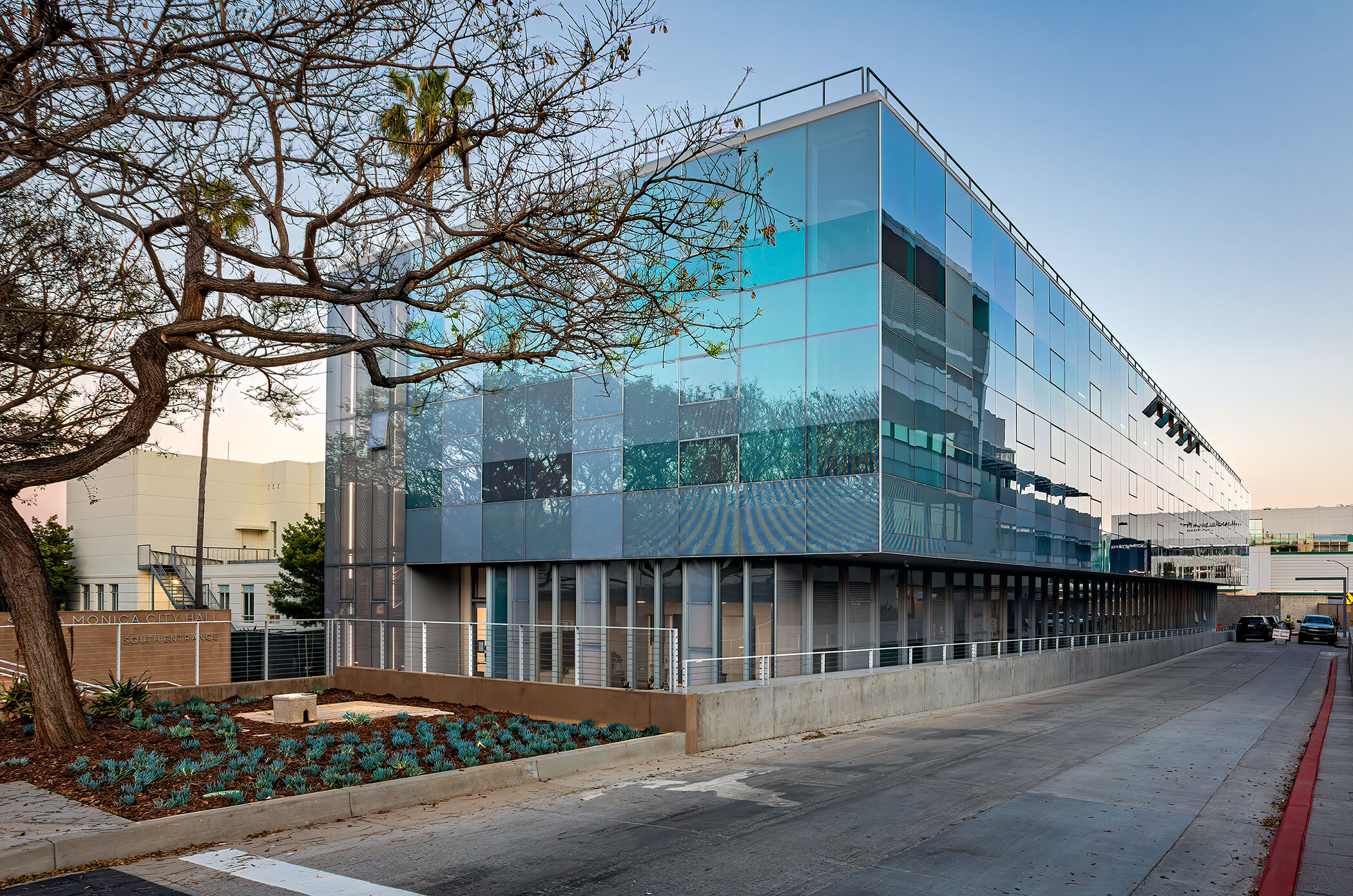
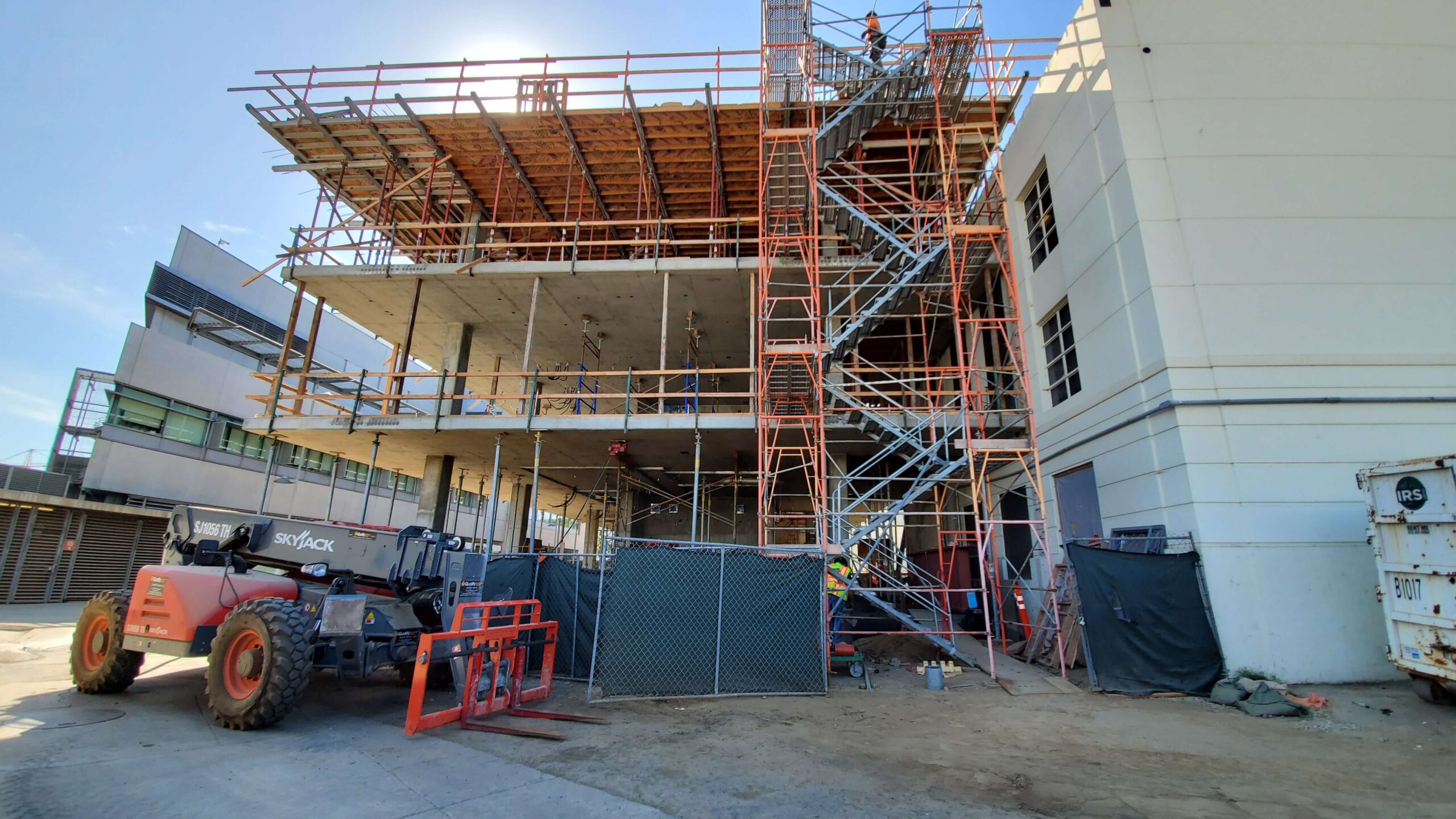
Delivered via Design-Build delivery, the new addition houses the City’s Building and Safety permit center, City staff offices, and ancillary spaces. The building is the first municipal building of its size and density in the world to meet full Living Building Challenge (LBC) certification as a Net Zero Water and Net Zero Energy building.
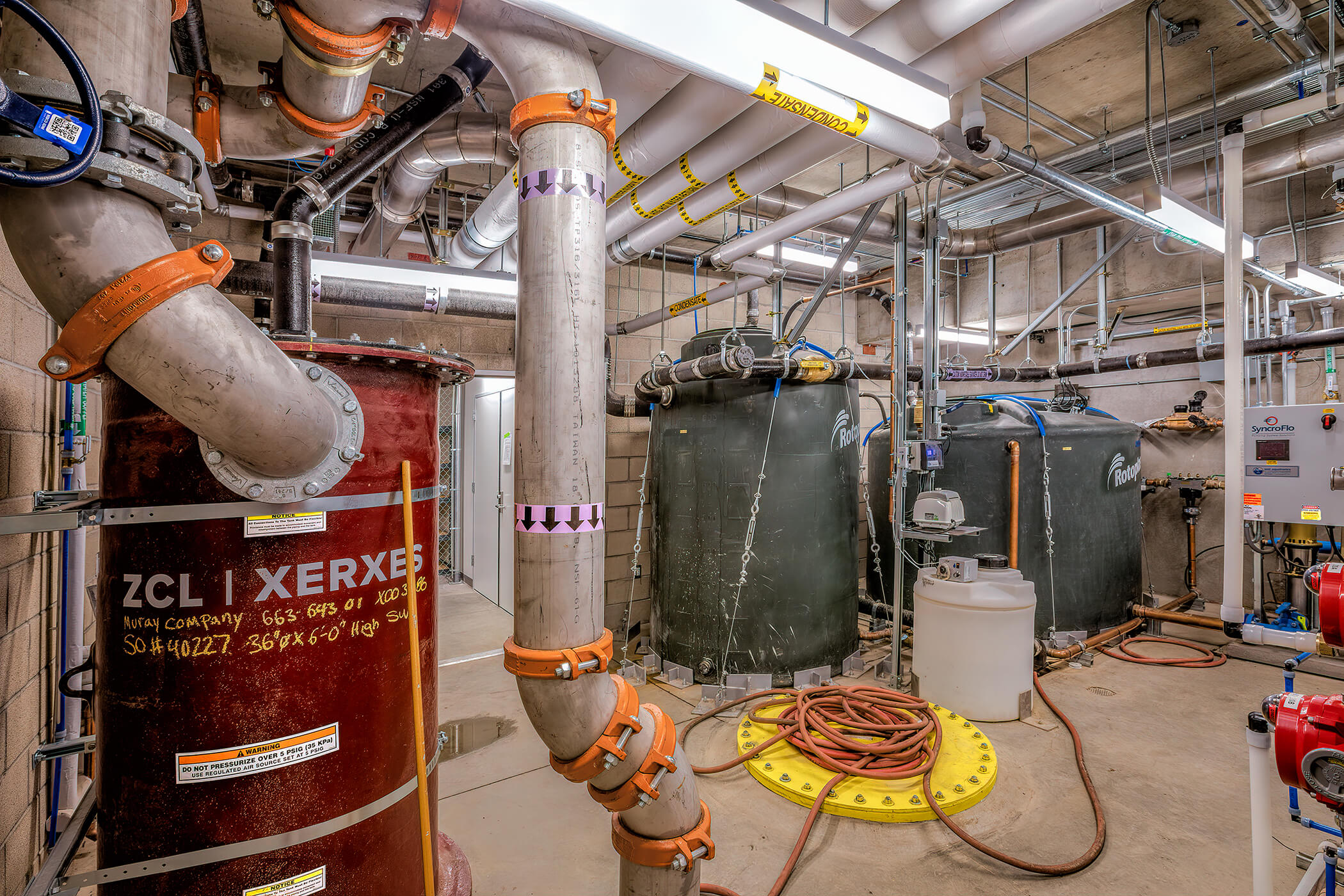
To meet the strict sustainability requirements to achieve LBC certification, the structural design had to be integrated with active and passive methods of water and energy conservation. This building is the first in California to be granted the rights to convert rain-to-potable water on site, using an advanced system of on-site water collection and treatment, including grey and black water. Solar panels were installed at the roof and over parking to offset building electricity use.
The new building is located over an abandoned basement that was previously backfilled with fill materials. To support the energy reducing and water savings systems, the building required a new basement to house program space for these utility services. Since the abandoned basement was supported on native soils suitable for bearing, the team was able to utilize the existing basement structure after removal of the existing fill and abatement of lead and hazardous materials, and save cost by eliminating additional excavation and new drilled piles. Drilled piles are used in the remaining areas of the new building in order to avoid surcharging the existing City Hall building.
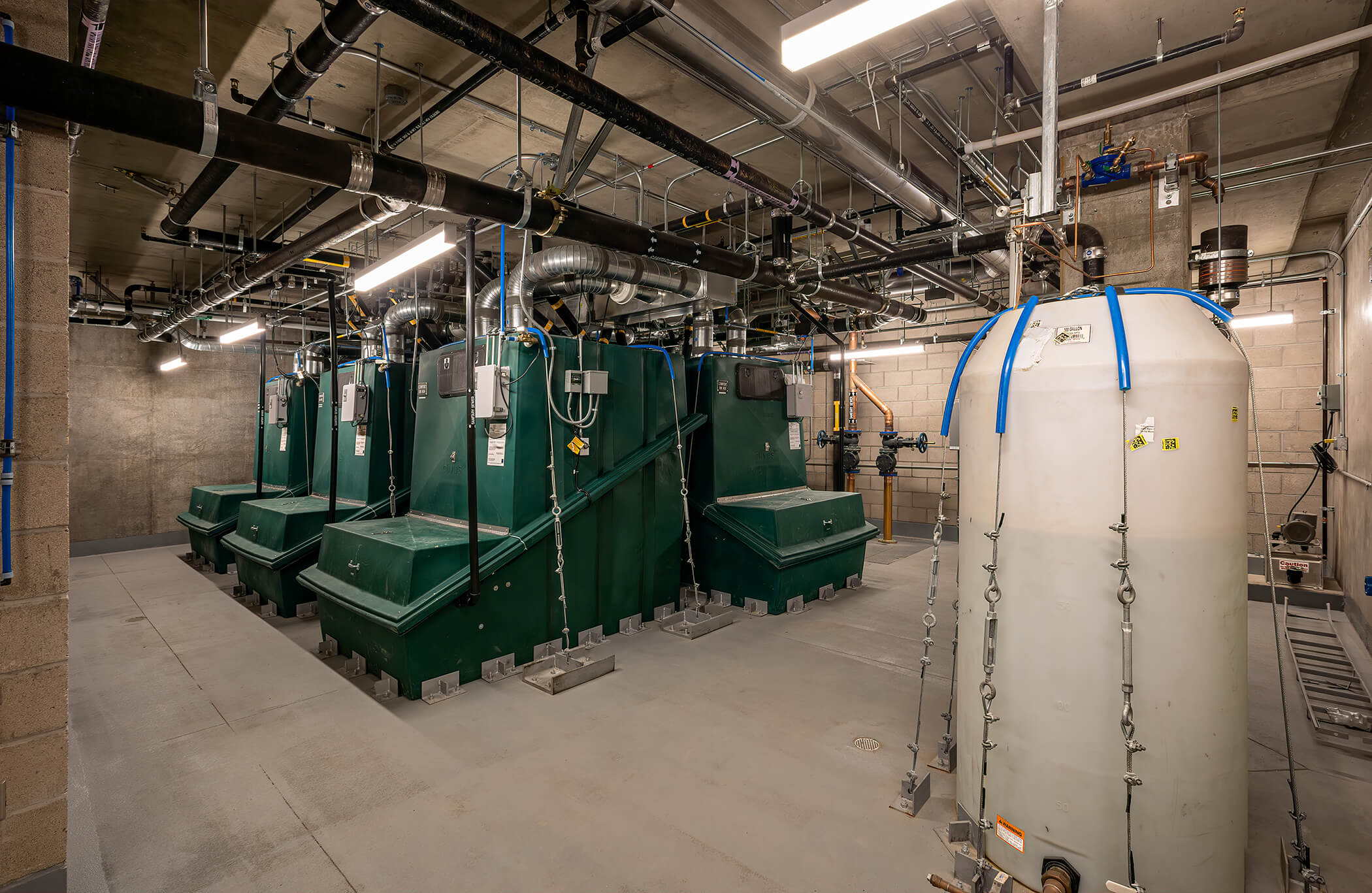
Composting Room

